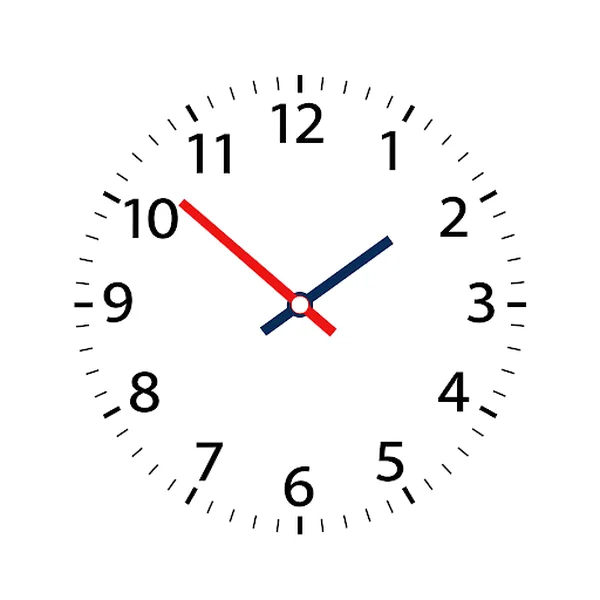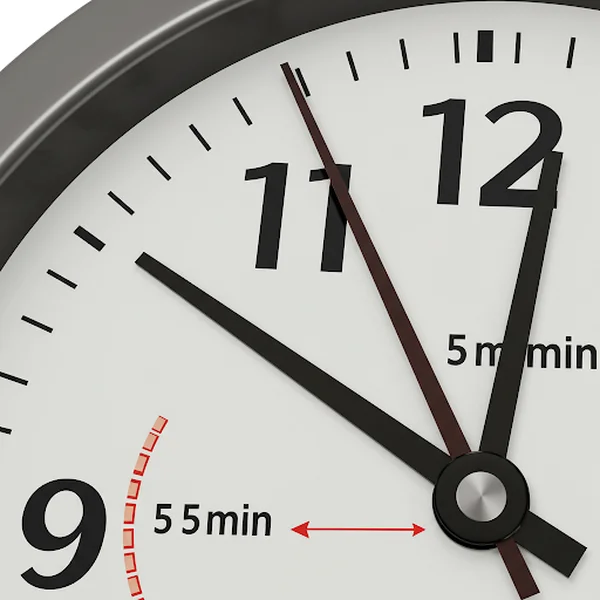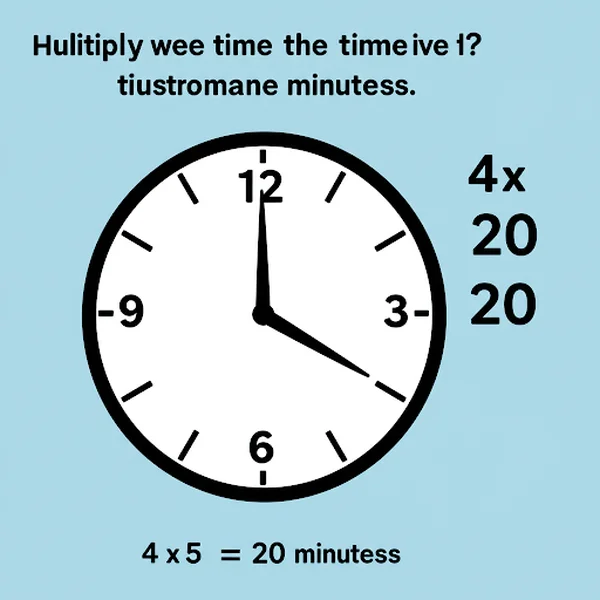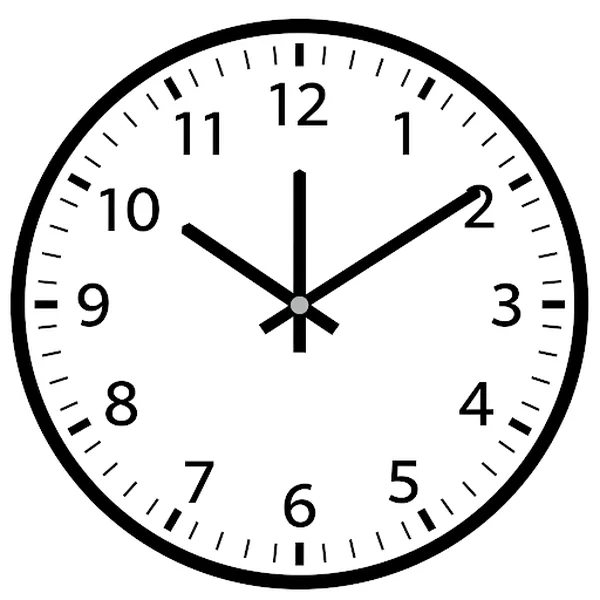Unlock the Minutes: Reading the Minute Hand Step-by-Step
Mastering the analog clock is a fantastic skill, and after learning the hour hand, the next exciting challenge is the minute hand! It might seem tricky at first, but understanding how to read minutes is key to telling time accurately. How do you read the minute hand accurately? This guide provides clear, step-by-step instructions to help students, parents, and teachers conquer the minute hand using simple methods and practice. Ready to master it? Let's dive in and learn together!
Identifying the Minute Hand on Your Analog Clock
First things first, let's make sure we know which hand we're talking about! Is the long hand the minute hand?
The Long Hand vs. The Short Hand
On most analog clocks, you'll see two main hands. One is shorter, and one is longer.
- Short Hand: This is the hour hand. It moves slower and tells you the hour.
- Long Hand: This is usually the minute hand. It moves faster than the hour hand and points to the minutes. We'll be focusing on this long hand clock pointer.
What Does the Minute Hand Show?
The minute hand's job is crucial: it tells you how many minutes have passed after the hour indicated by the hour hand. Understanding its movement unlocks precise analog time telling. The journey of these clock hands around the face marks the flow of the hour.

Understanding the Minute Markings: Ticks and Numbers
Before we read the minute hand, let's look closely at the clock face itself. Knowing the minute markings is essential.
The 60 Tiny Lines Around the Clock Face
Look at the edge of the clock. You'll see many small lines or dots called tick marks. There are usually 60 of these marks circling the entire clock face. Each single tick mark represents one minute.
How Each Number Represents 5 Minutes
You'll also see the numbers 1 through 12 on the clock face numbers. While these primarily mark the hours for the hour hand, they also serve as important landmarks for the minute hand. When the minute hand points directly at one of these big numbers, it represents a multiple of 5 minutes. For example:
-
Pointing at 1 = 5 minutes past the hour
-
Pointing at 2 = 10 minutes past the hour
-
...and so on, all the way to 12 (which means 0 minutes past the next hour, or the start of the hour).

Method 1: Count Every Tick for Perfect Minute Reading
This is the most precise way to read minute hand positions, especially when you're just starting or the hand isn't pointing exactly at a number. How do you count minutes on a clock this way?
Starting Your Count from the '12'
Think of the number 12 at the top of the clock as your starting point, representing '0' minutes.
Step-by-Step: Counting Individual Minute Marks
Follow these clock reading steps:
- Locate the minute hand (the longer one).
- Start at the number 12.
- Carefully count each small tick mark clockwise (the direction the hands normally move) until you reach the minute hand.
- The total number of ticks you counted is the number of minutes past the hour. This requires careful telling time practice.
When to Use This Precision Method
This method is excellent for:
- Beginners learning the concept of minutes.
- When the minute hand falls between the main numbers.
- Checking your answer if you used the shortcut method (Method 2).
Method 2: The 5-Minute Jump Trick for Faster Telling Time
Once you understand the 5-minute intervals, this shortcut makes telling time minutes much faster!
Using the Big Numbers (1-12) as Your Guide
This method uses the large numbers on the clock face as stepping stones.
How to Multiply the Number by 5 Quickly
Here are the clock reading steps for this method:
- See which big number the minute hand is pointing directly at, or the last big number it passed.
- Take that number and multiply it by 5. This technique is also called skip counting by 5s.
- The result is the number of minutes past the hour.
- Example: If the minute hand points at the 4, multiply 4 x 5 = 20. It's 20 minutes past the hour.
- Example: If the minute hand points at the 9, multiply 9 x 5 = 45. It's 45 minutes past the hour.
Knowing When This Shortcut Works Best
This method is ideal when:
-
The minute hand points exactly at one of the main numbers (1 through 12).
-
You need to quickly estimate the minutes. (If it's past the 7, you know it's more than 35 minutes).

Reading the Full Time (Hour & Minute)
Now that you know how to read both hands, let's combine them to understand how to read a clock minutes and hours together!
Remembering How to Read the Hour Hand (Quick Recap)
Briefly recall that the shorter hour hand tells you the hour. Look at which number it has passed most recently. (If you need a refresher, check out basic clock reading guides!)
Combining Hour and Minute Readings Clearly
To state the time:
- First, say the hour (from the short hour hand).
- Then, say the minutes (using Method 1 or Method 2 for the long minute hand).
Examples: Let's Read 3:25 and 8:48 Together
-
3:25: The hour hand is slightly past the 3. The minute hand points directly at the 5. (Method 2: 5 x 5 = 25). So the time is 3:25.
-
8:48: The hour hand is nearing the 9. The minute hand is 3 ticks past the 9. (Method 2 base: 9 x 5 = 45. Method 1 addition: Count 3 more ticks: 45 + 3 = 48). So the time is 8:48. You can confirm this instantly using an interactive learning clock.

Practice Time! Use Our Interactive Clock to Read Minutes
Reading about it is one thing, but practice makes perfect! How can I practice reading minutes? The best way is with hands-on experience.
Why Practice with AnalogClock.net Helps
Our online tool at analogclock.net is perfect for analog clock practice. It lets you:
- Move the minute hand freely to any position.
- Instantly see the corresponding digital time.
- Focus specifically on the minute hand.
Try Setting Different Times Yourself!
Challenge yourself! Try setting times like 7:13, 11:52, or 2:38. See if you can read the minutes correctly before checking the digital display. Give it a try on our free interactive learning clock!
Using the Lock Feature to Focus on Minutes
A great feature on our interactive clock is the ability to lock one hand while moving the other. Try locking the hour hand and moving only the minute hand through all 60 positions to really solidify your understanding.
You've Unlocked the Minutes! Keep Practicing
Congratulations! You now have the tools and knowledge to confidently read the minute hand on an analog clock.
Key Takeaways for Reading Minutes
- The long hand is usually the minute hand.
- Each small tick mark is one minute (60 total).
- Each large number represents 5 minutes (use Method 2: multiply by 5).
- Count individual ticks for precision (Method 1).
- Combine the hour and minute readings for the full time.
Your Next Steps in Telling Time
The key is consistent practice. Keep looking at analog clocks around you, or use online tools regularly. The more you practice, the faster and more automatic reading minutes will become.
Frequently Asked Questions About Reading the Minute Hand
Here are answers to some common questions:
What if the minute hand is between two numbers?
This is where Method 1 (counting individual ticks) is most useful. Find the last big number the hand passed, calculate its minutes (multiply by 5), and then count the extra ticks from that number to the minute hand. You can visualize this precisely on our interactive clock tool.
Is the long hand always the minute hand?
On almost all standard analog clocks designed for telling time, yes, the longer hand is the minute hand. The shorter hand is the hour hand. Some decorative clocks might differ, but for learning purposes, assume long = minutes.
How do you count minutes using the numbers?
You use Method 2: Identify the number the minute hand is pointing at (or the last one it passed). Multiply that number by 5. For instance, if it points at the 7, it's 7 x 5 = 35 minutes. Practice this skip counting by 5s on our clock.